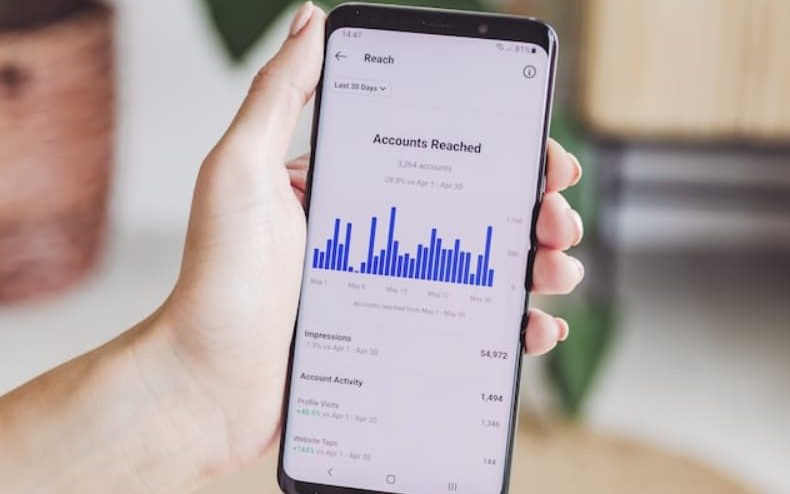These days, almost everyone is active on at least one social media platform. Whether they’re liking, reposting, or pinning, social media has become a part of everyday life. Knowing how to ask for donations on Facebook can enable your nonprofit to tap into vital fundraising resources!
Social media posts are one of the top drivers of charitable giving, and it can’t be ignored that Facebook is still a social media giant. Despite declining teenage involvement in recent years, many people still use Facebook to connect with each other, businesses, and nonprofits.
Your organization can ask for donations in any number of ways and using Facebook to solicit contributions is just one of the tools that your nonprofit should have in its toolbox.
Use these ten tips to ask for donations on Facebook:
- Post regular content on Facebook
- Know your audience on Facebook
- Make it easy for supporters to donate via your Facebook page
- Get your supporters involved
- Host interactive livestreams
- Take advantage of Facebook ads
- Schedule your posts to maximize impact
- Share progress made on fundraising initiatives
- Track your Facebook insights
- Show your gratitude

1. Post regular content on Facebook
It’s going to be tricky to ask people for donations on Facebook if your organization’s page isn’t up to par or doesn’t have an engaged audience. One of the most important steps in Facebook fundraising is to post regular content that encourages your followers to engage with your organization.
Posting content on Facebook regularly can take a variety of forms. Here are some examples of different types of posts you can make:
Straightforward appeals
Let’s get this point out of the way first. If you want to raise more money by fundraising on Facebook, you have to ask for donations. Plain and simple. Don’t just post “Give us your money,” though.
A good, straightforward appeal incorporates a combination of:
- Visual content (pictures or videos).
- Links to your donation page or general website.
- Information about what the donations are going toward.
- Data about current progress and donations needed to reach a campaign goal (when applicable)
It’s important to use visual content in your Facebook posts. You have to find a way to rise above the noise of everyone else’s updates, photos, and statuses. Creating eye-catching images and graphics within your appeals will help draw more people to your posts and consequently, to your donation page.
It’s not a good idea to only post appeals on your Facebook page though. Followers will quickly tire of your posts if all they see are asks for donations. Instead, vary your content day by day to give followers updates and success stories.
Thank you posts
Every once in a while, you should highlight an individual donor or business on Facebook that contributed to your organization.
Not only does this allow your organization to give a shout out to your loyal supporters, but it also might encourage other followers to make their own contributions.
Success stories
If your organization completes a project or hosts a successful event, share that moment with your followers. They’ll enjoy seeing the tangible results of other people’s donations and will be motivated to make their own contribution.
For instance, if your organization works to help abandoned animals find a new home, post updates whenever a puppy or kitten is adopted. Not only will the adorable pictures appeal to your followers, but they’ll be able to directly see the work you’re doing.
2. Know your audience
Understanding your audience is a foundational step for any successful Facebook fundraising campaign.
Start by studying your followers—who are they, what are their interests, and what motivates them? Take a deep dive into your audience’s demographics, insights, and engagement trends to tailor your messaging to their preferences.
Once you have an idea of who you’re reaching through Facebook, you can use language, themes, and images that resonate and align with their values. This approach makes your message more relatable, increasing the chances of engagement and support.
Here are some examples of how you can discover and appeal to your audience to increase engagement:
Analytics
If you take a look at your Facebook analytics, you may notice a specific demographic interacting more often with your posts. For example, you may notice your organization sees more interactions from the Baby Boomer generation on Facebook posts. Using that knowledge, you can go on to create posts that appeal to your audience, such as facing one of your Baby Boomer volunteers in an appreciation post.
Birthday fundraisers
Another example of knowing your audience is knowing who is sharing and raising money for your organization on Facebook. If some of your supporters are appealing to their networks for birthday fundraisers for your nonprofit, you can use that information to encourage those supporters to participate in a peer-to-peer campaign for your organization.
3. Make it easy for supporters to donate via your Facebook page
To make it easy for your supporters to donate via your Facebook page, your donation form needs to be easy to find.
One quick way to keep donation options visible is by pinning a post with a link to one of your donation forms at the top of your organization’s Facebook page so supporters are still able to make their donations. Also you can add a “Donate” button to the top of your page for people to see when they click on your profile!
You can also promote signing up to receive updates from your organization on posts. For example, you can add little CTAs (calls-to-action) asking people to sign up for regular updates from your nonprofit at the end of your fundraising posts.
Besides adding a “Donate” button and pinning a linked post, here are a couple of examples of how you can make it easy for people to donate:
Add a link to posts
While your Facebook should have a diverse amount of content, you can still add a link to your website or donation form on regular posts without making the post about the ask. This way when people see your posts, they’re able to donate without too many clicks.
Boost your content
You can also use paid promotional tools to boost posts to ensure they get seen by your audience. This helps your posts get seen by more people and is a great place to link to your donation page.

4. Get your supporters involved
Your audience isn’t just a group of passive followers—they’re active participants in your cause.
You can engage them in your fundraising efforts by encouraging them to share your posts, participate in peer-to-peer fundraisers, or offer ideas and feedback through polls, Q&A sessions, or comments.
When people feel part of the team, they’re more likely to contribute and help spread the word. Here are some examples of how you can get your supporters involved:
Sharing is caring
Don’t underestimate the power of sharing content! Asking your supporters to share your content or start a fundraiser for your organization can help you reach different donor bases and raise awareness for your cause.
Supporter challenges
Social media challenges are a great way to get your supporters involved with your organization and can really help spread awareness for your cause. Once of the most famous examples of this is the ALS Ice Bucket Challenge that went viral. The challenge raised funds while also informing more people about ALS.
5. Host interactive livestreams
Livestreams are a dynamic way to connect with your audience in real time. They provide a way for you to share updates, provide behind-the-scenes views, and directly engage with supporters by answering their questions and addressing their comments in one place.
By making your livestreams interactive, you can encourage viewers to comment, share, and even donate during the broadcast, turning engagement into action. Livestreams help put a face to your organization that can help encourage people to give.
To make the experience even more impactful, you can also add incentives to motivate your audience to get involved and give to your cause. Here are some ways you can make your next livestream an interactive event:
Live tour
If you’re raising money for a new facility or for renovations on a current building, you can host a tour on your Facebook livestream. During the stream, explain that money donated is going directly to the building your supporters are seeing to provide a visual on how donations are making a tangible difference.
Fundraiser thermometer
Add a thermometer to your livestream so your supporters can see how much has been raised while watching. This can help encourage people to donate as they want to see the thermometer fill up.
6. Take advantage of Facebook Ads
Paid advertising on Facebook is one of the most effective ways to amplify your reach and connect with the right audience, and the different pricing options can help fit into many different budgets.
By targeting specific demographics such as age, location, interests, or even previous engagement with your page, you can make sure your message reaches those most likely to support your cause.
Make your ads stand out by using compelling graphics, and pair it with an emotional or motivating message that tells the story of your mission. You can inspire supporters to connect with a clear and easy-to-spot call-to-action, whether it’s to donate, volunteer, or learn more.
Here are a couple of examples of how to use ads to ask for donations on Facebook:
Photo ads
Use a photo or a carousel of photos showing the work you do and the community you help with a heartwarming story about what can be accomplished with a suggested donation amount. Make sure to link directly to your donation page to get potential donors there quickly.
Video ads
Develop an ad campaign video showcasing your mission and the positive impact of donations. You can create a general video about your nonprofit or make ones specific to the fundraising campaign you’re focusing on at the time.
7. Schedule your posts to maximize impact
Timing is everything when it comes to posting on all social media, including Facebook. By scheduling your posts for when your audience is most active, you can significantly increase the chances of engagement and visibility.
Use tools like Meta Business Suite or other social media management tools to plan out your content calendar and keep a steady stream of posts that align with the habits of your supporters.
The right timing can vary depending on your audience, but evenings, lunch breaks, or weekends tend to see higher engagement on average. Experiment with different timings to identify what works best for your nonprofit or look into your analytics to find the best times.
Here’s an example of how you can time your posts to increase engagement:
Around work hours
If your nonprofit is targeting working adults, schedule fundraisers or key updates after work hours, around 12 p.m. during lunch or 7 p.m. when people are relaxing at home, to capture their attention when they’re more likely to interact.
8. Share progress made on fundraising initiatives
One of the best ways to keep your donors engaged with your mission is by providing regular updates for them on the progress their contributions have made.
Whether you’ve exceeded a fundraising goal, completed a major project, or reached a new milestone, sharing successes demonstrates the direct impact of their generosity. By showing that their support matters, you build trust and encourage continued involvement.
Here are some examples of how you can share compelling updates with your supporters that encourage their continued support:
Reaching goals
If you’ve hit your fundraising goal, you can share a post with your supporters, thanking them for their generosity and providing details about what your organization will be able to accomplish with the money raised. You can also add images or videos of your nonprofit in action to give supporters a clear picture of their impact.
Big milestones
You don’t need to wait until you’ve hit your goals to give an update. Providing updates at major fundraising milestones, such as 25%, 50%, or 75% of a goal raised, can help motivate your donors to give to help you reach 100% of your goal and beyond.

9. Track your Facebook insights
As you post more on Facebook, make sure that you’re tracking your page’s insights.
Some key insights to look into include:
- Overview. You’ll be able to see how many recent likes you have, the reach of your posts, and how many people are interacting with your content with the help of a general graph.
- Reach. This will tell you how many people your posts have reached through organic means as well as paid advertisements on Facebook. You’ll also be able to look more closely at your likes, comments, and shares over time.
- Posts. You can determine when your followers are online as well as which statuses, links, and photos have the best reach, clicks, likes, comments, and shares.
Although keeping track of your insights is not a direct way to ask for donations, it will allow you to determine which of your posts are most effective at reaching your followers, which ones they are engaging with, and when they are responding to those posts.
Here’s an example of how you can use your Facebook insights to improve posts asking for donations on Facebook:
Choosing graphics
If you see a specific post doing well in your insights, you can use it to guide the content you post. If you have an appeal post doing well and you notice the image you used featured volunteers, you can start including more photos that feature your volunteers working in posts asking for donations to potentially replicate the results of the post that previously performed well.
10. Show your gratitude
Expressing gratitude is one of the most crucial parts of nurturing strong relationships with your supporters.
Publicly thank your donors, volunteers, and advocates (with their permission) to show them your appreciation. Acknowledging contributions in meaningful ways, such as personalized messages, social media shoutouts, or special mentions during events, can help strengthen your supporters’ connection to your cause.
Gratitude isn’t just about saying thanks—it’s about building a community that feels seen and appreciated for their efforts. Here’s a couple of examples of how you can use Facebook to steward your supporters:
Thank-you video
As your donors help you reach your fundraising goal for a campaign, have a board member or executive team member film a video thanking your donors for all the support during the campaign. Your video can feature names of major donors and sponsors and can also highlight exactly how their donations are making a difference.
Post from a beneficiary
Your supporters love to hear directly from the community that your nonprofit is helping. See if any beneficiaries of your organization are willing to write a short post that tells their story and explains how much your supporters’ donations helped them out.
Final thoughts
Social media has become an integral part of everyday life for millions worldwide, and leveraging platforms like Facebook can significantly boost your nonprofit’s fundraising efforts. Remember, Facebook fundraising is not just about asking for donations—it’s about telling your organization’s story, connecting with your audience, and inspiring them to join your cause. So, embrace these strategies, harness the power of social media, and watch your fundraising efforts soar on the world’s largest social platform.
Additional resources
For more information, take a look at these additional resources:
- The Complete Guide to Facebook Ads for Nonprofits. Want to use ads on Facebook? Check out this guide!
- Fundraising on Facebook: Best Practices for Nonprofits. Learn more about fundraising on Facebook with these best practices.
- 8 Expert Tips To Raise $10K+ On Facebook. Watch this webinar to discover how to raise more using Facebook!





